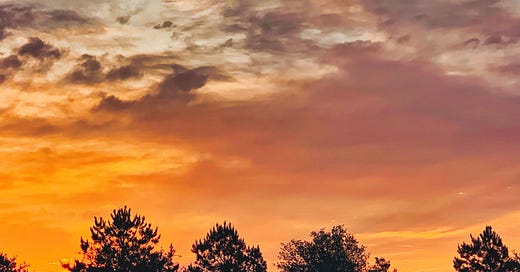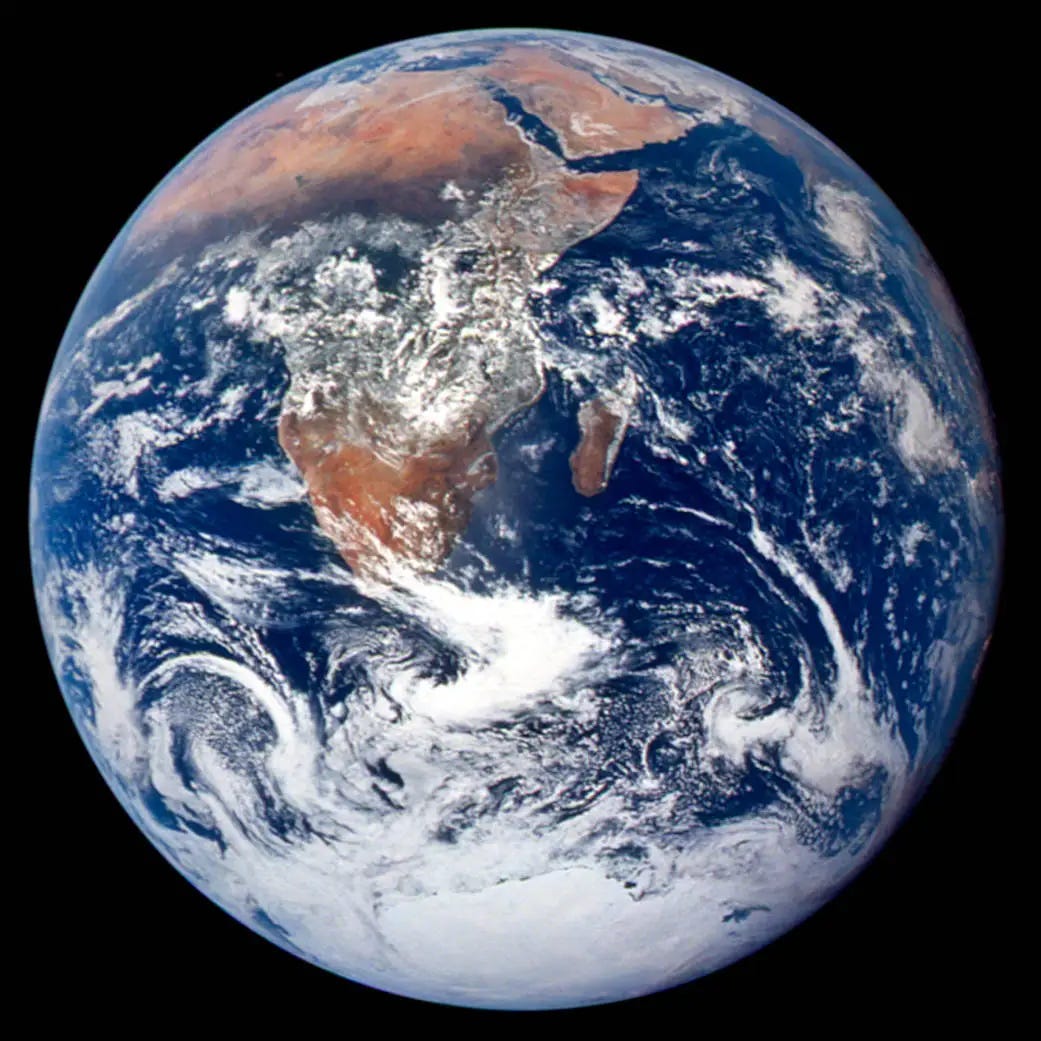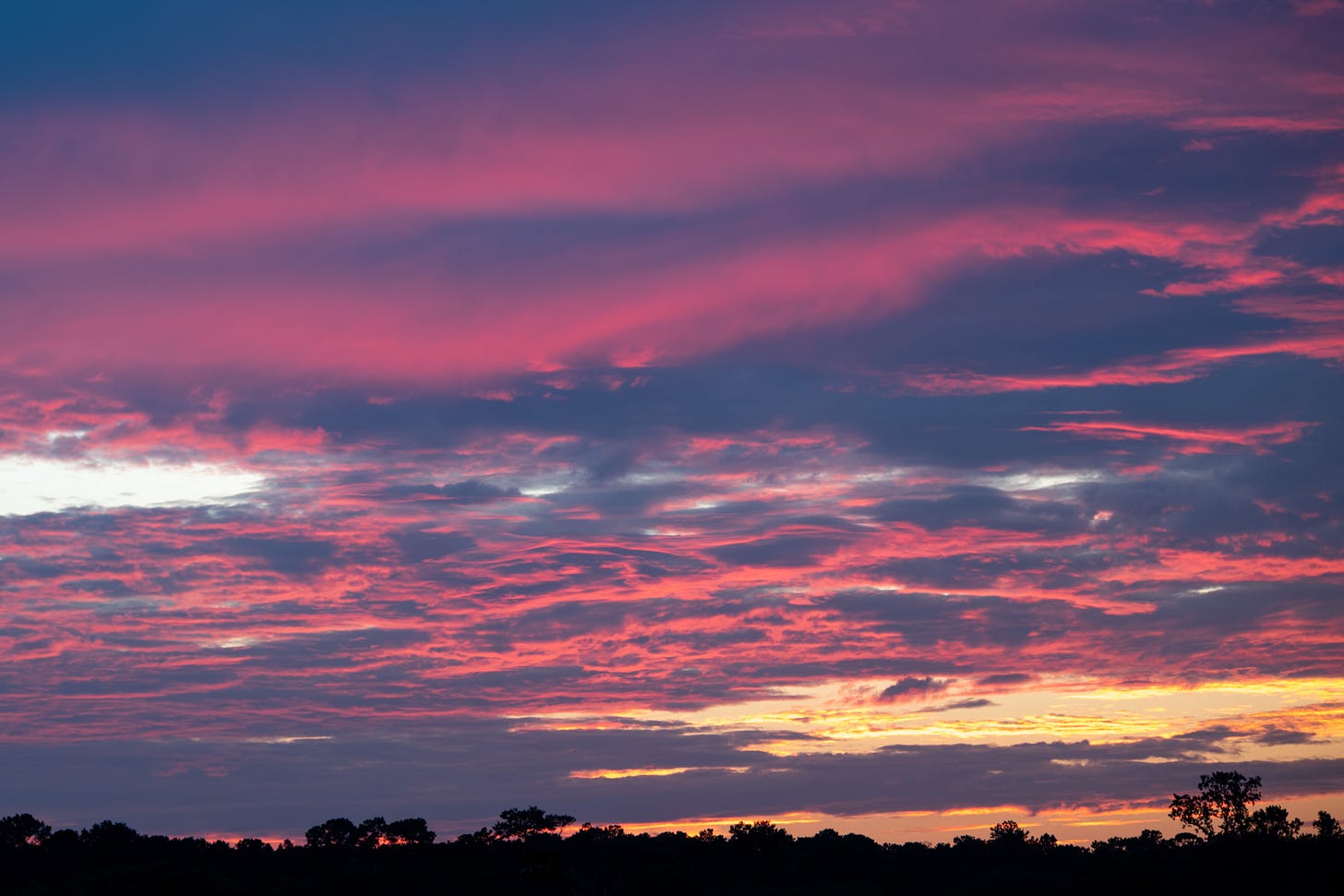Hello friend,
My answer to that question partially rests on my perspective and understanding of what dust is, where it comes from, and how it affects me. I encountered dust this week, some bad, annoying, and another dust full of potential for awe and wonder.
I won’t dwell on the bad, but moving boxes and sweeping dirt in the garage left its residue on and in me. Dust also settles on furniture, in corners, and the dust we carry casts shadows across our joy.
Today, I’m looking forward to a river of dust rushing across the African continent, over the Atlantic Ocean, “rising in dense whirling clouds,” and sprinkling microscopic grains of sand over North and South America. The meteorologists forecasted that Saharan dust would create exquisite sunrises and sunsets.
My kind of spectacle!
Before grabbing my camera, I wanted to know more about this dusty phenomenon. You might assume my first search landed me in Google, but I had a more lyrical, equally informative resource, a children’s picture book by Jilanne Hoffmann.
A River of Dust follows the flow of the dust from the Sahel lifted by the harmattan winds until it reaches the Amazon basin, and some of us. The story unfolds through the perspective of dust, describing the journey and explaining how the particles falling along the way maintain the health of our planet.
Did you know?
The lush Amazon rainforest derives its nutrients from the Saharan dust.
Most of the dust leaving North Africa falls into the Atlantic Ocean, and the particles of phosphorus and iron support trillions of microscopic plants that contribute to slowing climate change.
NASA satellites measure the dust, capturing information about “airborne particles, vegetation, air quality and ozone, cloud content and formation, wind velocity, and carbon dioxide levels.”
This and more appear in the backmatter of the book—a treasure trove of information for curious minds, regardless of age.
Behind all these facts lies a more profound story, one of connection, systems, and interdependence. We do not exist on isolated islands of land.
Fifty-five years ago, astronauts on the Apollo 17 mission to the moon photographed Earth, a small blue marble. From that perspective, no boundaries exist. We inhabit a single spot in the vast universe.
What if we looked closer to home and saw our neighbors and the world from that broader perspective? How are we more alike than different? What do we share that makes us all stronger and a community?
Food for thought as I gaze at the sunset, as particles from the other side of the world swirl in my backyard.
We are all dust
And the dust speaks:
“I am dust, the dust of North Africa.
I am more than the grit in an eye,
The smudge of a finger,
the grime that swirls down the drain.
For I connect continents.”
—From A River of Dust, Jilanne Hoffman, illustrated by Eugenia Mello
If you would like to read more, visit my website. I’ll be waiting for you there.
And always—
Be kind. Be Brave. Be You!
Kathryn
This post, “The dust is coming,” appeared first on Kathryn LeRoy.
I always welcome your thoughts, so please leave a comment or click the little heart—you can also respond to this email.
Thanks for reading. Feel free to forward this weekly note to someone who would enjoy a few words of inspiration.
Or if you received this from a friend and want to receive my weekly post,








